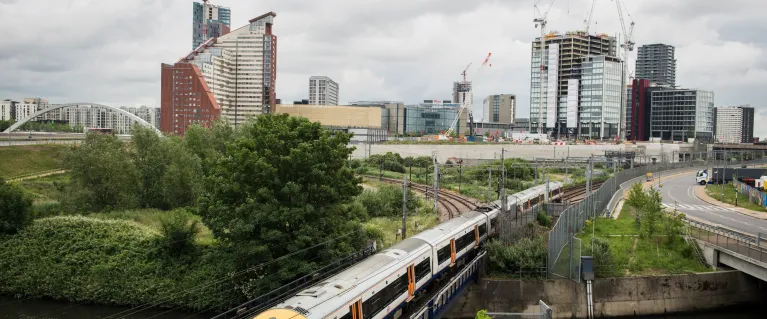
LAND4LDN programme
What is the LAND4LDN programme?
Understanding the availability of land to deliver London’s housing need is core to being able to plan for the future of the city. This is done through a Strategic Housing Land Availability Assessment (SHLAA), a process that has historically been undertaken by boroughs and the GLA periodically, whereby a snapshot of London’s land availability for housing is taken and analysed at a fixed point in time. A SHLAA was last carried out by the GLA in 2017.
Since 2017 there have been significant changes in the availability of planning data, enabling planners to have a more dynamic understanding of how the city is changing in real time. The availability of live data combined with digital tools has paved the way for a new approach.
In autumn 2022, the GLA launched the LAND4LDN programme, a suite of innovative digital tools that deliver real-time data for all London boroughs to use in their SHLAA and other plan making and monitoring activities. The programme aims to revolutionise the SHLAA process, facilitating a data-driven approach to development capacity and forming an evidence base for developing the London Plan and local planning policies.
Our Vision
- Create a unified platform with real-time data for assessing and monitoring developable land, addressing London’s housing needs
- Provide a transparent system for London’s planning authorities to monitor housing land trajectory, analyse capacity, propose new development sites, and review data exclusively
The Programme
This programme spans two years and will deliver an updated, rolling SHLAA for London.
Year 1: BUILD
- Develop the LAND4LDN platform including its interfaces with available data sources, which enables London boroughs to engage with existing data and to collect additional data
- Develop the Call for Sites service, which allows local authorities, developers, landowners and the public to put new development sites forward
Year 2: IMPLEMENTATION
- Launch the LAND4LDN platform and the Call for Sites service
Collaboration
Successful planning of cities takes collaboration between everyone who has a vested interest in making that city a success. The success of this program will rest in engaging not only with planning authorities across London, but also with Londoners, landowners, developers, service suppliers, transport providers and other parties who have an interest in the future of London.
During the initial phases, London boroughs and key stakeholders are engaging in developing the LAND4LDN platform, after which other stakeholders will be invited to engage with the project.
To ensure this process is transparent, this page will be regularly updated with key information on the project and its progress. Please do check back regularly for updates and learning.
Latest updates
The Call for Sites submission period has now ended.
The Call for Sites submission period concluded on 30 November 2024. Submissions received after this date will be considered at the borough’s discretion. If you intend to submit sites, please contact us by email and we will share the details with the respective boroughs.
Progress
The project team hosted a series of Show and Tell sessions to provide regular updates on how the project has been progressing.
LAND4LDN launch - 18 September 2024
- Click here to watch
Show and Tell 5 – 16 July 2024
- Click here to watch
Show and Tell 4 – 4 June 2024
- Click here to watch
Show and Tell 3 – 27 February 2024
- Click here to watch
Show and Tell 2 – 31 January 2024
- Click here to watch
Show and Tell 1 – 8 December 2023
- Click here to watch
Need a document on this page in an accessible format?
If you use assistive technology (such as a screen reader) and need a version of a PDF or other document on this page in a more accessible format, please get in touch via our online form and tell us which format you need.
It will also help us if you tell us which assistive technology you use. We’ll consider your request and get back to you in 5 working days.